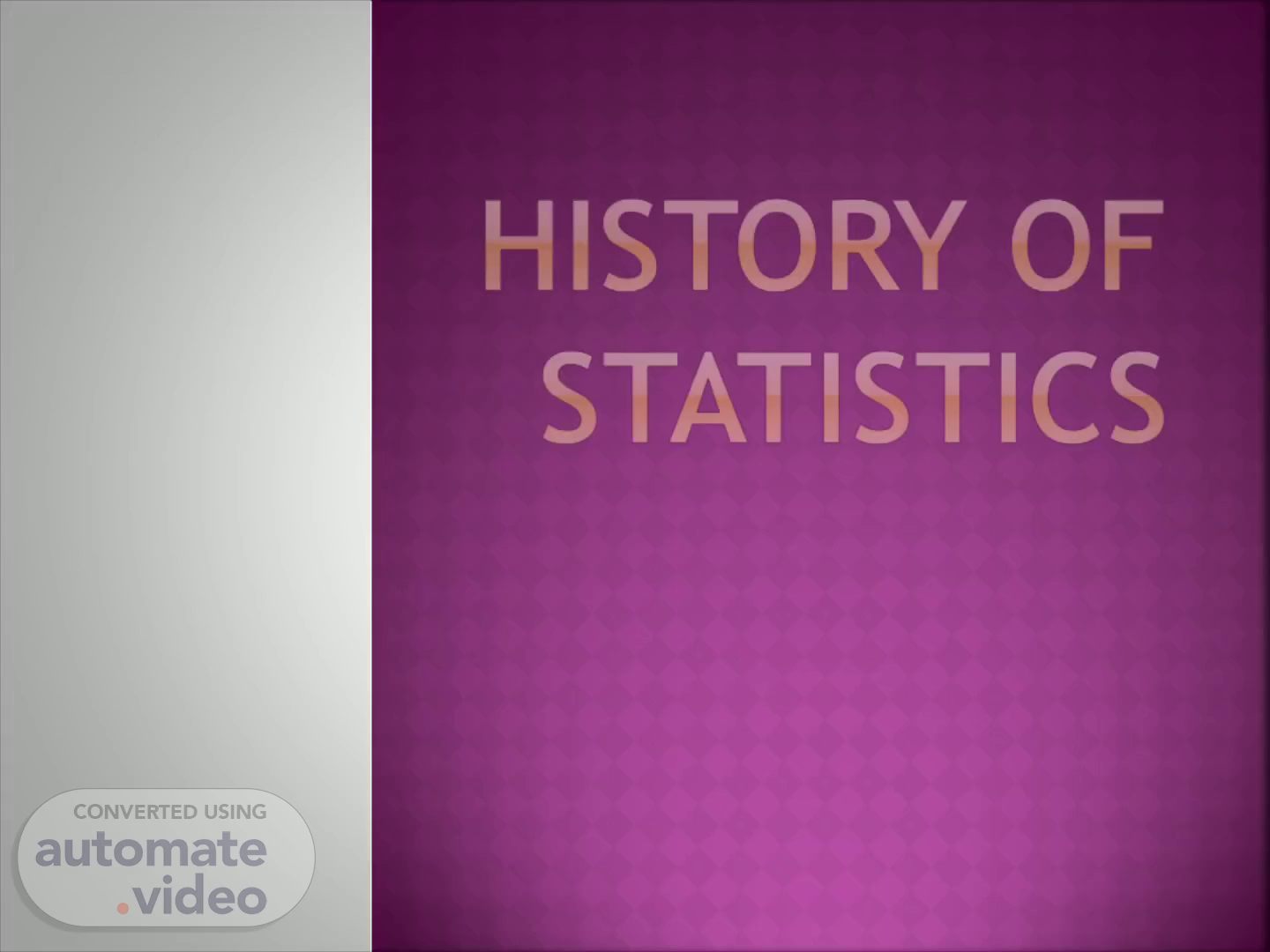
History of statistics
Scene 1 (0s)
History of statistics. name:amruta dhonde Roll no.ff33 class:fybsc(cs).
Scene 2 (8s)
Introduction of statistics. Statistics is a mathematical body of science that pertains to the collection, analysis, interpretation or explanation, and presentation of data,[9] or as a branch of mathematics.[10] Some consider statistics to be a distinct mathematical science rather than a branch of mathematics. While many scientific investigations make use of data, statistics is generally concerned with the use of data in the context of uncertainty and decision-making in the face of uncertainty.[11][12] In applying statistics to a problem, it is common practice to start with a population or process to be studied. Populations can be diverse topics, such as "all people living in a country" or "every atom composing a crystal". Ideally, statisticians compile data about the entire population (an operation called a census). This may be organized by governmental statistical institutes. Descriptive statistics can be used to summarize the population data. Numerical descriptors include mean and standard deviation for continuous data (like income), while frequency and percentage are more useful in terms of describing categorical data (like education)..
Scene 3 (47s)
Development of statistics. Development of statistics on student attrition and retention in compliance with federally suggested guidelines and as a basis for study of the influence of financial aid on student attrition and retention. The Committee welcomes the efforts made with regard to data collection and in particular the creation in 2005 within the Ministry for the Protection of Children of a Statistics Department and the adoption in 2007 of a National Strategy for the Development of statistics. Development of statistics that more accurately grasp actual situation of depopulating society Japan’s population used to steadily increase but started to decrease in 2005 for the first time after WWII. Preparations for the implementation of the Agricultural Census or structural survey of farms; Development of annual crop statistics (special survey); Development of statistics of permanent crops (structural data for trees and vineyards as separate surveys); Expansion of livestock statistics and livestock products (with a new indicator (statistics on meat, milk, egg production, etc..
Scene 4 (1m 25s)
Function and limitations of statistics. The important limitations of statistics are: (1) Statistics laws are true on average. Statistics are aggregates of facts, so a single observation is not a statistic. Statistics deal with groups and aggregates only. (2) Statistical methods are best applicable to quantitative data. (3) Statistics cannot be applied to heterogeneous data. (4) If sufficient care is not exercised in collecting, analyzing and interpreting the data, statistical results might be misleading. (5) Only a person who has an expert knowledge of statistics can handle statistical data efficiently..
Scene 5 (1m 49s)
How various organization helps in development of statistics.
Scene 6 (2m 22s)
Central statistical office (CSO). The Central Statistics Office is a governmental agency in India under the Ministry of Statistics and Programme Implementation responsible for co-ordination of statistical activities in India, and evolving and maintaining statistical standards. It has a Graphical Unit. The CSO is located in Delhi. Wikipedia Founded: 2 May 1951 Headquarters: New delhi, India Preceding agencies: Central Statistical Organization; Central Statistical Institute.
Scene 7 (2m 42s)
National statistical office(NSO). The Ministry has two wings, one relating to Statistics and the other Programme Implementation. The Statistics Wing called the National Statistical Office(NSO) consists of the Central Statistical Office (CSO), the Computer center and the National Sample Survey Office (NSSO). Prepares national accounts as well as publishes annual estimates of national product, government and private consumption expenditure, capital formation, savings, estimates of capital stock and consumption of fixed capital..
Scene 8 (3m 5s)
Function and limitations of statistics. Statistics has patently two broad functions. The first of these functions is description and the summarizing of information in a manner so as to make it more usable. The second function of statistics is induction, which involves either making generalizations about some ‘population’ on the basis of a sample drawn from this population or formulating general laws on the basis of repeated observations. The two functions of statistical methods can be easily understood by the following example. Suppose it is desired to study the problem of labour unrest in a particular area. The first thing to be done here will be to analyse the various causes of labour unrest and to study the impact of each one of these on the various categories of labour, viz., male workers and female workers or skilled labour and unskilled labour..